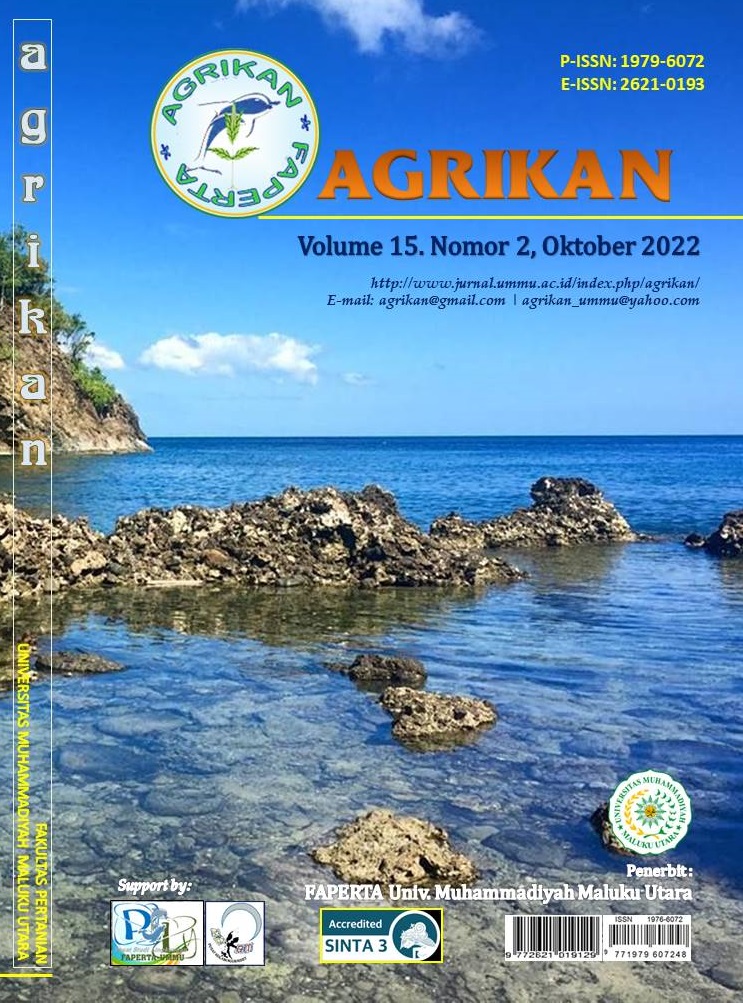Forms of Urban Forest Management in Rum Village, Tidore Islands City
DOI:
https://doi.org/10.52046/agrikan.v15i2.1328Keywords:
Urban Forest, support factor, inhibiting factor, Tidore Islands CityAbstract
The purpose of this study was to determine the form of urban forest management and to identify the supporting and inhibiting factors in urban forest management in Rum Village, Tidore Islands City. This research was conducted by using a qualitative approach in which this research is descriptive and tends to use process and meaning analysis (source perspective). The data collection techniques that the researchers used in this study were observation, literature and interviews. The population in this study was the Head of the Tidore Archipelago City Environment Service and the Head of the Tidore Islands City Research and Development Agency. The data analysis technique used is descriptive qualitative analysis. The results showed that the management activities of the Rum Balibunga Urban Forest carried out by the relevant agencies were still very minimal and it was known that there was coordination between the relevant agencies in the management of the Rum Balibunga urban forest, where if the relevant agencies would carry out activities for development in the urban forest of Rum Balibunga, they would always carry out coordination with the Department of the Environment (DLH) of the City of Tidore Islands. Inhibiting factors and supporting factors are budget constraints, level of awareness and lack of access to the urban forest.
Downloads
Published
Issue
Section
License
Copyright (c) 2022 M. Vikram Y., Sabaria Niapele, Muhammad Vikram Y. Abhar

This work is licensed under a Creative Commons Attribution 4.0 International License.

This work is licensed under a Creative Commons Attribution 4.0 International License.













